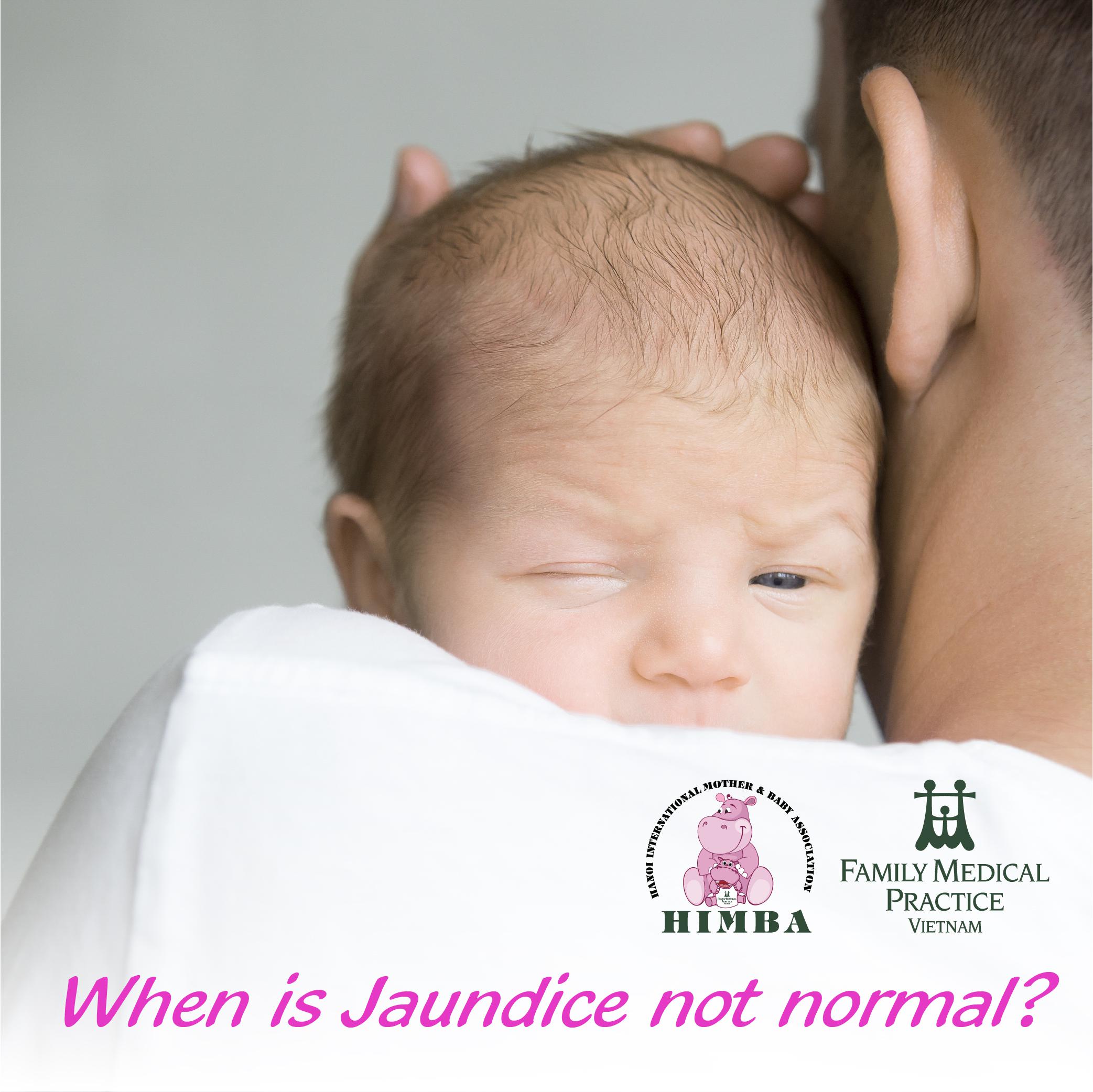[Newborn care] When is Jaundice not normal?

'When is Jaundice not normal?’
Physiological jaundice is a condition where a newborns skin appears yellow because of a chemical called bilirubin- produced when your baby’s liver breaks down red blood cells.
Babies have an excess of blood cells when they are born so it can take some days for their new liver to function well and the bilirubin to be excreted properly.
Jaundice usually begins around day 3 and lasts until day 10 to 14. The incidence rate (how often) is 80-90% of newborn babies.
What can be done to treat Jaundice?
Feed, feed, feed- every 2 hours. Hydration and calories helps clear the bilirubin by stimulating regular excretion- a great way to get rid of excess bilirubin.
Phototherapy: this is a special light that the baby is placed under to help break down the bilirubin under the skin. This is required when bilirubin levels are above a specific ‘threshold’. It is important to treat high levels of bilirubin as if this chemical begins to circulate through the blood-brain barrier it can cause permanent brain damage.
In the majority of cases, with plenty of nutrition, warmth and some time, jaundice will go with no further complications.
When Jaundice needs urgent professional review:
-If your baby has jaundice in the first 24 hours
-If your baby is jaundice and is reluctant to feed- preferring to sleep rather than feed
-If your baby has yellow urine (urine should always be clear)
-If your baby has a pale coloured stool (stools should never be pale after day 4 should be yellow)
-If your baby still has jaundice after day 14 or if jaundice is worsening day by day rather than clearing.
Resources:
Download the yellow alert app:
https://childliverdisease.org/yellow-alert/#
https://www.cdc.gov/ncbddd/jaundice/index.html
Author: Abigail Laurie Registered Midwife and Registered Specialist Public Health Nurse, United Kingdom.
 We use cookies on this website to enhance your user experience
We use cookies on this website to enhance your user experience